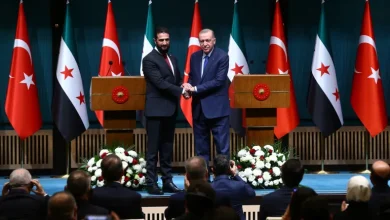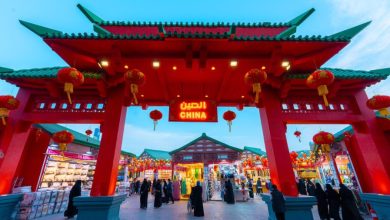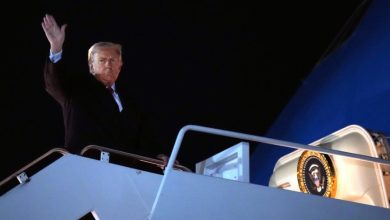Trump in Saudi Arabia: Underscoring Historic Ties and Riyadh’s Strategic Centrality

The US President, Donald Trump, is set to land in Riyadh on Tuesday, May 13, 2025, in a landmark visit that reaffirms the depth of Saudi-US relations.
Saudi Arabia was the destination of Trump’s first foreign trip during his first term as a president. He also chose the Kingdom to be his first overseas destination in his second term – although the death of Pope Francis forced him to make a brief visit to the Vatican – in a powerful testament to Saudi Arabia’s strategic significance for the US.
Saudi-US Relations: 8 Decades of Partnership
Saudi Arabia and the US have enjoyed solid relations that date back to more than 80 years ago. Bilateral relations, based on mutual respect and common interest, have evolved over the years into a firm partnership across various sectors, including trade, defense, energy, education, technology and tourism.
The roots of the Saudi-US relations go back to the 1930s, when American businesses collaborated with the Kingdom to develop its natural resources, particularly in oil exploration and production.
Then came the historic meeting between Saudi Arabia’s King Abdulaziz bin Saud and US President Franklin D. Roosevelt aboard the US Navy cruiser USS Quincy in Suez Canal on February 14, 1945. Roosevelt requested the meeting in recognition of Saudi Arabia’s strategic importance to the future of the region and the global economy.

This meeting marked the beginning of Saudi-US diplomatic ties, laid the groundwork for a strong partnership characterized by mutual respect and benefit, and shaped the post-World War II Middle East.
A History of Cooperation
The “Quincy Meeting” established relations between Saudi Arabia and the US. Bilateral cooperation developed over the years and expanded to various fields, including defense and economy. In celebration of the new friendship, Roosevelt gifted King Abdulaziz with a DC-3 passenger plane, followed by two additional planes, leading to the founding of Saudi Arabia’s national airlines, Saudia.
In 1953, Saudi Arabia and the US fostered their military ties through the Mutual Defense Assistance Agreement. The bilateral relations were further strengthened when King Saud paid a state visit to Washington and met with President Dwight D. Eisenhower in 1957, becoming the first Saudi monarch to visit the US.
The economic cooperation between both countries continued to deepen over the years. In 1974, the US-Saudi Arabian Joint Economic Commission (JECOR) was established. It aimed to bolster political ties through focusing on economic cooperation, industrial development, education, technology and agriculture.

The Gulf War in 1990-91 strengthened military cooperation between the Kingdom and the US, when Saudi troops, alongside US and allied forces, took part in the liberation of Kuwait, further underscoring Saudi Arabia’s pivotal role in regional defense.
Strengthening Partnership
Both countries boosted cooperation in counterterrorism, energy, education, and economy through the Saudi-US Strategic Dialogue, created in 2002 during King Abdullah’s visit to the US. In 2005, Saudi Arabia and the US enhanced educational exchange by establishing the King Abdullah Scholarship Program, which allowed tens of thousands of Saudis to study in the US.
As a result of this thriving partnership, Saudi Arabia has become one of the largest US export markets in the Middle East, while the US has become the Kingdom’s second largest trading partner. Both countries also signed a Trade Investment Framework Agreement. Numerous bodies have been created to enhance economic ties, including Saudi-US Business Council and Saudi-US Investment Forum.

Moreover, the two countries have maintained close consultations on a wide range of international and regional issues, including the Middle East peace process and shared interests in the Gulf. The Kingdom plays a vital role in driving peace and prosperity in the region and is a powerful partner in counterterrorism efforts.
In 2017, the partnership between Riyadh and Washington achieved another milestone when Trump visited the Kingdom during his first term as a president. Trump convened three high-level summits: the Arab Islamic American Summit, the US-Saudi Bilateral Summit, and the US-GCC Summit. The visit featured several meetings aimed at expanding military and commercial cooperation.
Official Visits
Over the years, Saudi and US leaders exchanged visits to bolster relations. In the light of this, 8 US Presidents visited Saudi Arabia. In 1974, President Richard Nixon met with King Faisal in Jeddah. Four years later, in 1978, President Jimmy Carter met with King Khalid and Crown Prince Fahd in Riyadh.
President George H.W. Bush visited Saudi Arabia two times. In 1990, he met with King Fahd and the Amir of Kuwait in Jeddah and addressed US and British military personnel in Dhahran. Then, in 1992, he met with King Fahd in Riyadh.

In 1994, President Bill Clinton met with King Fahd at King Khalid Military City. Moreover, President George W. Bush met with King Abdullah twice in Riyadh, in January 2008 and May 2008.
President Barack Obama visited the Kingdom 4 times. He met King Abdullah in 2009 in Riyadh, followed by another meeting in 2014. Obama also met with King Salman in 2015 in Riyadh, and visited Saudi Arabia’s capital again in 2016, where he met with King Salman and attended the US-Gulf Cooperation Council (GCC) Summit.

After that came the historic visit of President Trump in 2017, when he met with King Salman, signed military sales agreements, and met with the GCC leaders in Riyadh.
In 2022, President Joe Biden visited Jeddah, where he met with King Salman and Crown Prince Mohammed bin Salman, and attended the GCC Summit.
Trump in Saudi Arabia
Trump’s upcoming visit to Saudi Arabia comes at a time of heightened regional and international tensions and global economic uncertainty. The visit builds on the robust Saudi-US ties and underscores the Kingdom’s strategic role in boosting regional security and stability.

Saudi Arabia has made intensified diplomatic efforts to achieve political solutions to regional conflicts, including Gaza, Sudan, Lebanon, Syria, and Yemen. Its peace initiatives and mediation efforts have also extended to resolve international crises, including the Russia-Ukraine war and, most recently, the India-Pakistan tensions. This has established its position as a key regional and international player and a diplomatic heavyweight.
During the visit of Trump to Riyadh, Saudi Arabia will host a US-Gulf Summit, convening the leaders of the GCC countries on May 14, 2025.

The Kingdom has also become a strategic investment hub under Vision 2030, which aims to diversify the national economy and reduce reliance on oil revenues. This has created promising opportunities for investment in key sectors, such as technology and renewable energy. Saudi Arabia is also consolidating its status as a host for major events, encouraging investments in its mega projects.
On the occasion of Trump’s visit to the Kingdom, the Saudi-US Investment Forum will convene on May 13, 2025, attracting senior Saudi and American investors to reinforce the bilateral partnership. It will focus on a wide range of fields, including clean energy; technology and artificial intelligence (AI); advanced manufacturing; financial services; venture capital and innovation; aerospace and defense; and healthcare and life sciences.





